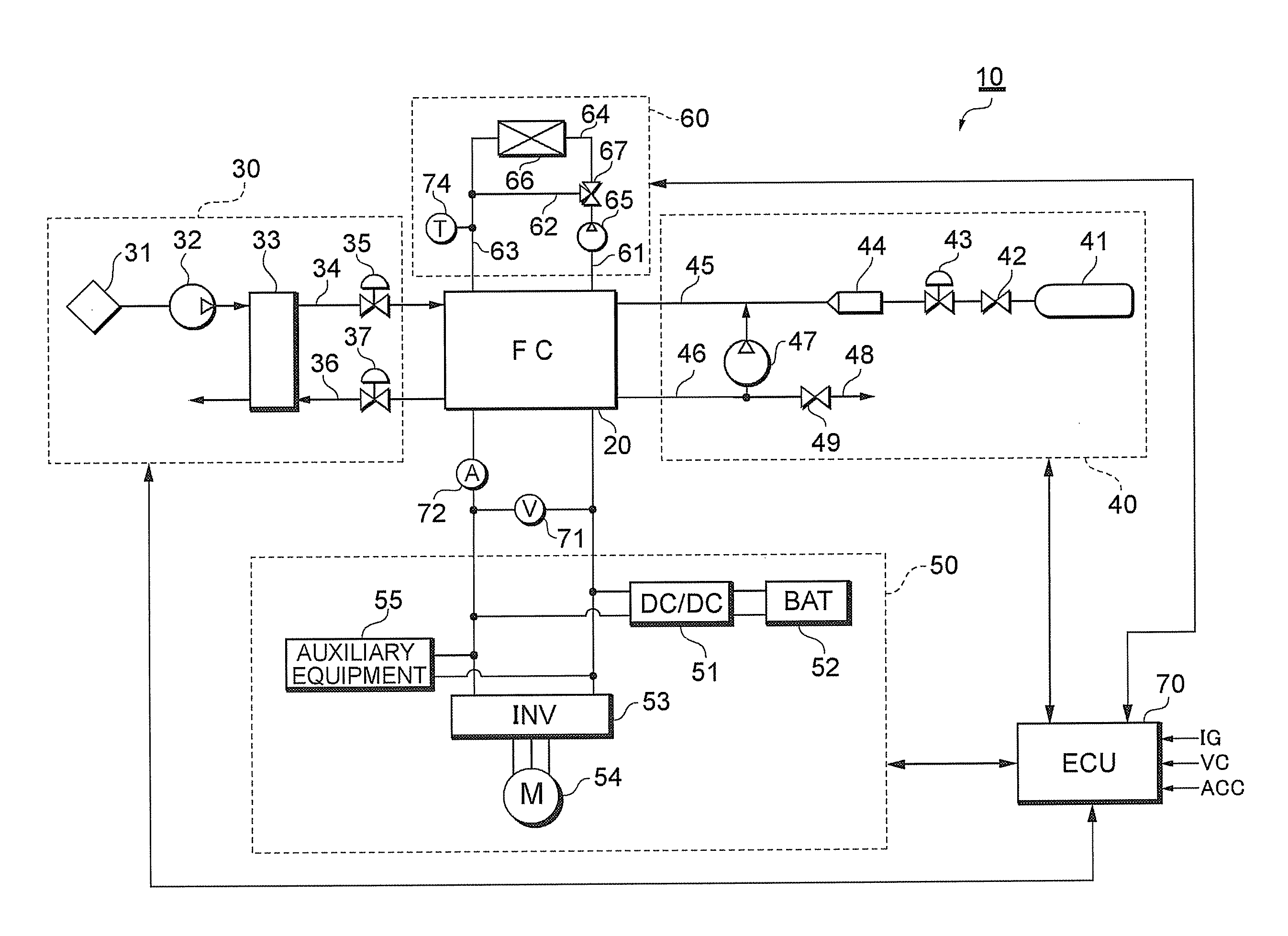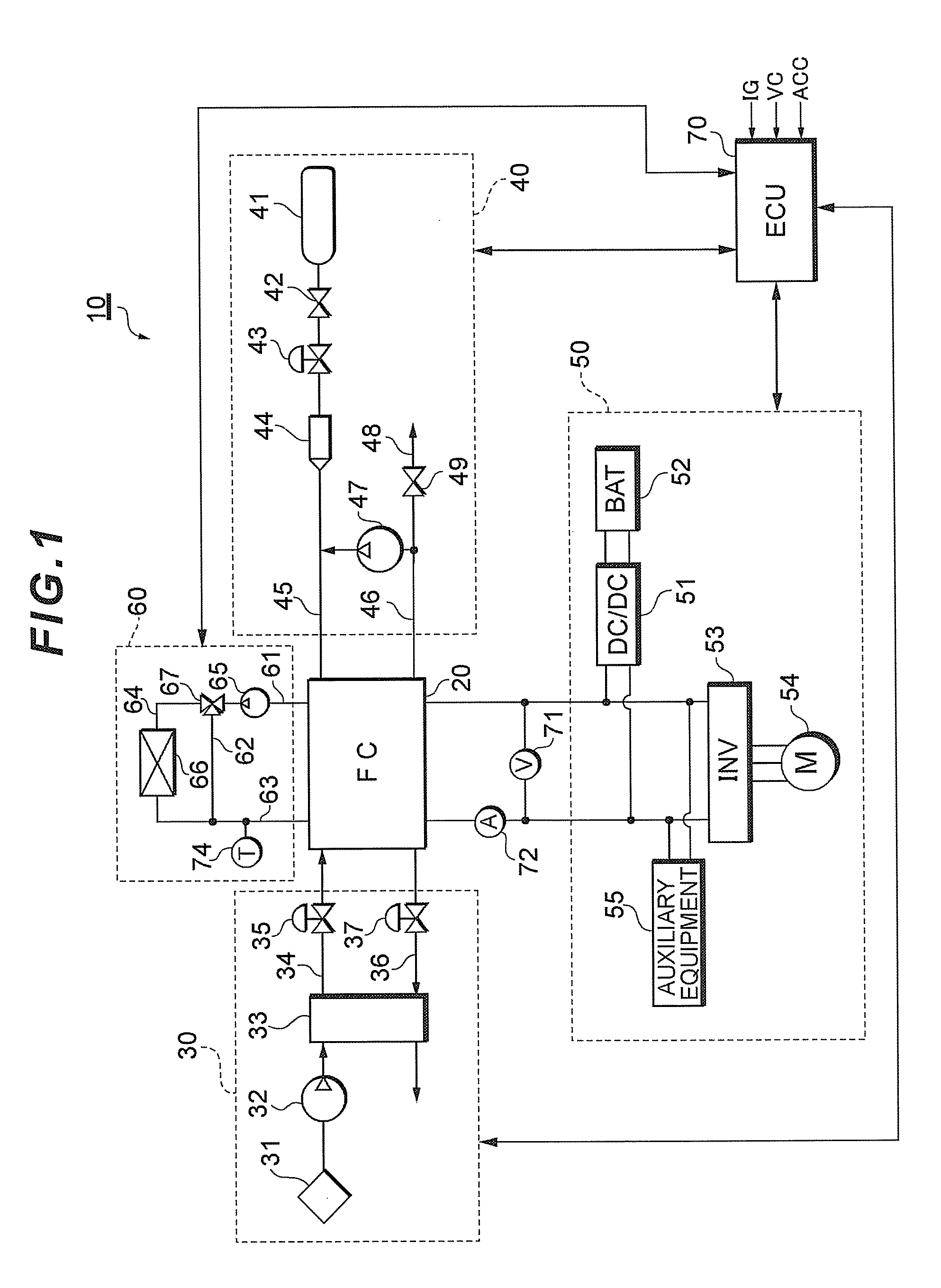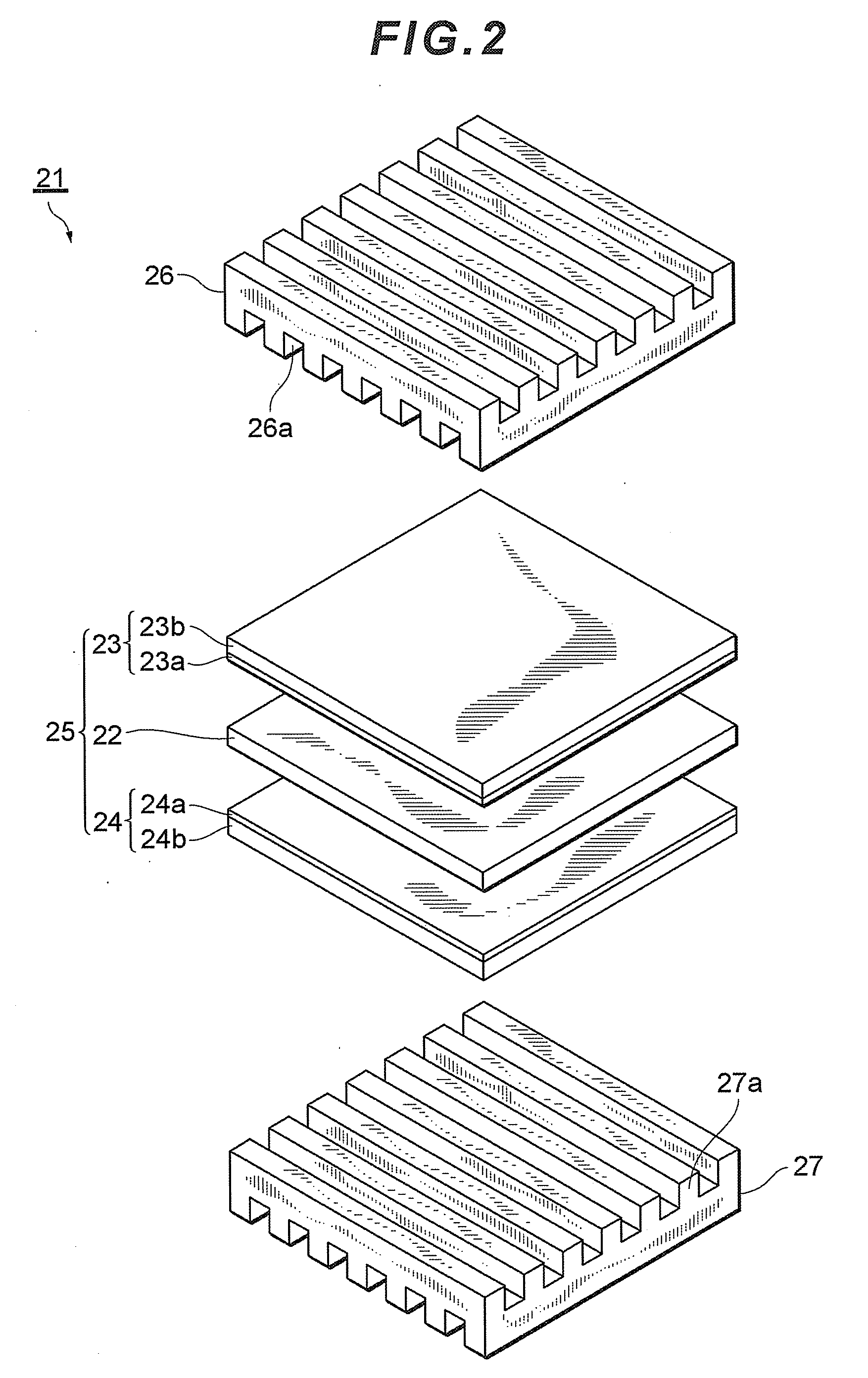Fuel cell system
a fuel cell and system technology, applied in the field of fuel cell systems, can solve the problems of inability to carry out output control based on required electric power, inability to supply electric power in excess or deficiency of electric power, and inability to meet the requirements of electric power supply, so as to increase the voltage value of the operating point
- Summary
- Abstract
- Description
- Claims
- Application Information
AI Technical Summary
Benefits of technology
Problems solved by technology
Method used
Image
Examples
Embodiment Construction
[0032]The following will describe an embodiment in accordance with the present invention with reference to the accompanying drawings.
[0033]FIG. 1 is a system configuration of a fuel cell system 10 according to the present embodiment.
[0034]The fuel cell system 10 functions as a vehicle-mounted electric power source system installed in a fuel cell hybrid vehicle, and includes a fuel cell stack 20 which receives the supply of a reactant gas (a fuel gas and an oxidizing gas) to generate electric power, an oxidizing gas supply system 30 for supplying air as the oxidizing gas to the fuel cell stack 20, a fuel gas supply system 40 for supplying a hydrogen gas as the fuel gas to the fuel cell stack 20, an electric power system 50 for controlling the charge / discharge of electric power, a cooling system 60 for cooling the fuel cell stack 20, and a controller (ECU) 70 which controls the entire system.
[0035]The fuel cell stack 20 is a solid polymer electrolytic cell stack composed of a pluralit...
PUM
| Property | Measurement | Unit |
|---|---|---|
| temperature | aaaaa | aaaaa |
| pressure | aaaaa | aaaaa |
| pressure | aaaaa | aaaaa |
Abstract
Description
Claims
Application Information
 Login to View More
Login to View More - R&D
- Intellectual Property
- Life Sciences
- Materials
- Tech Scout
- Unparalleled Data Quality
- Higher Quality Content
- 60% Fewer Hallucinations
Browse by: Latest US Patents, China's latest patents, Technical Efficacy Thesaurus, Application Domain, Technology Topic, Popular Technical Reports.
© 2025 PatSnap. All rights reserved.Legal|Privacy policy|Modern Slavery Act Transparency Statement|Sitemap|About US| Contact US: help@patsnap.com



